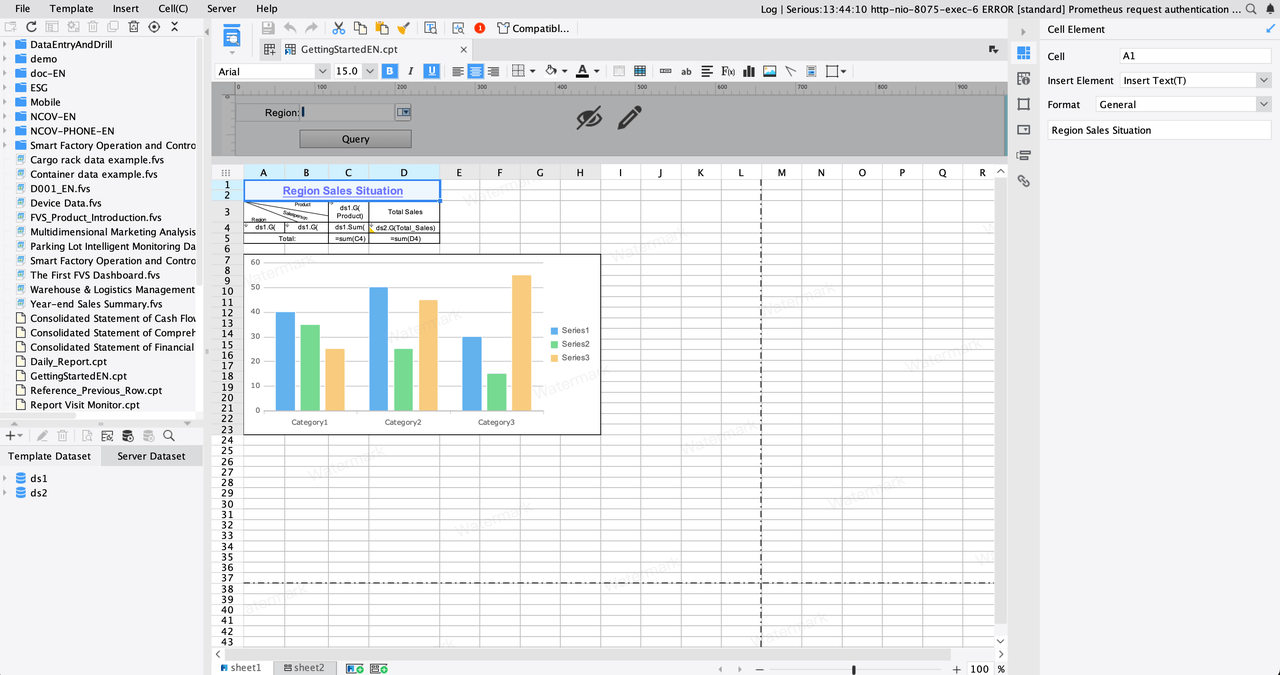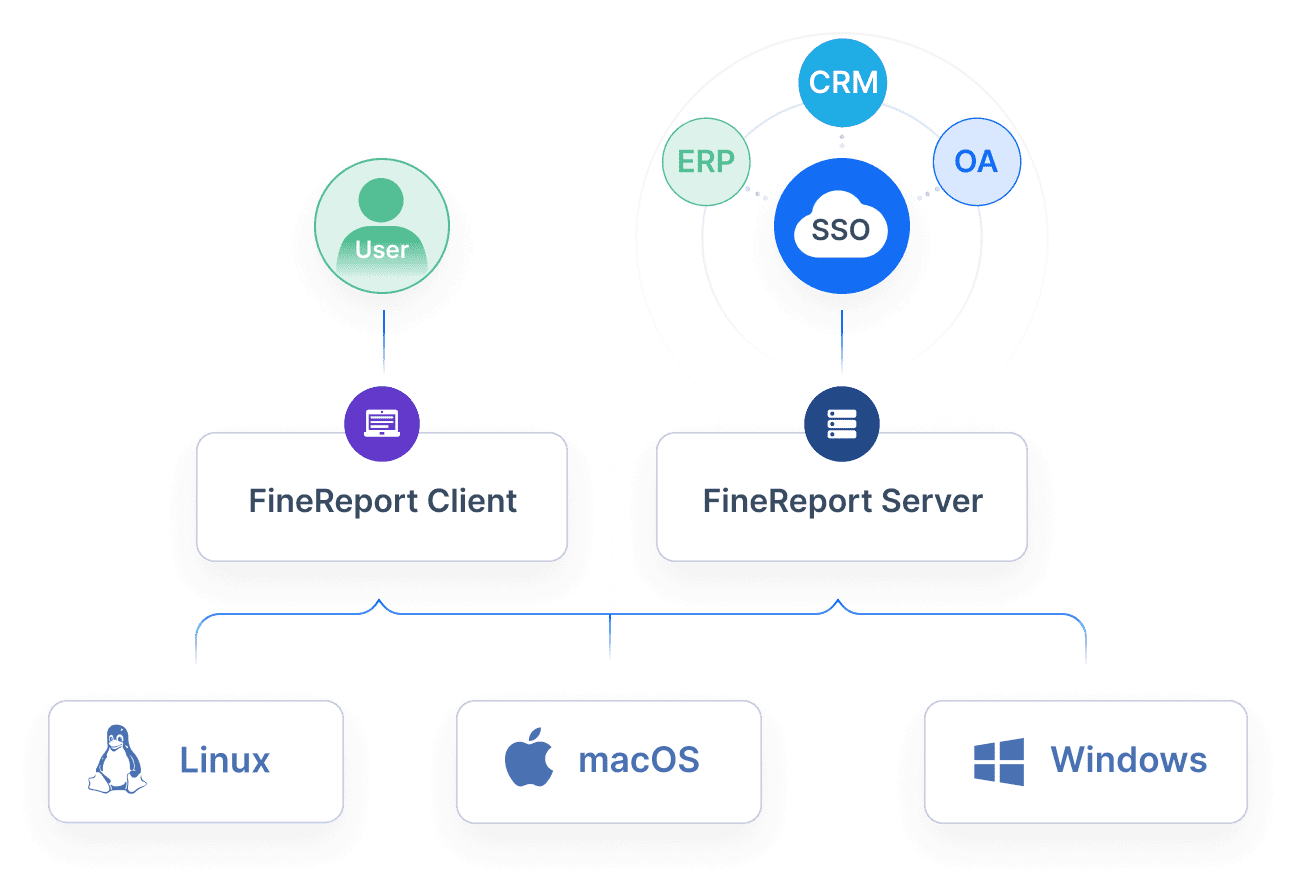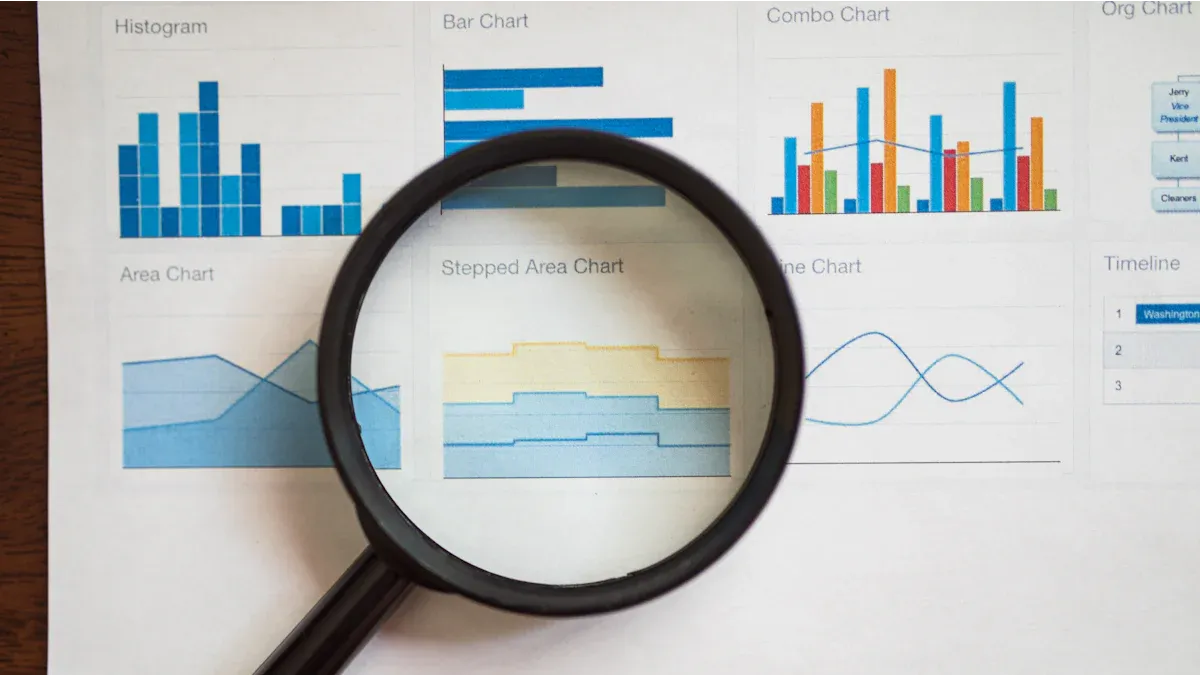The term "report in Malay" translates to "laporan," which holds significant importance in communication. A laporan enables you to share information, summarize events, or present findings in a structured way. Understanding its meaning allows you to utilize it effectively in both personal and professional settings. Whether documenting progress, communicating results, or conveying ideas, a well-crafted laporan ensures clarity and accuracy.
Key Takeaways
- The word 'laporan' means 'report' in Malay and helps share information clearly.
- You can use 'laporan' in formal or casual talks to explain events or findings.
- Knowing how to use 'laporan' makes you better at talking in work or daily life.
- FineReport makes creating reports in Malay simple and easy to automate.
- Learning similar words for 'laporan' improves how you express yourself.
What is the Meaning of Report in Malay?
Translation and Definition of 'report' in Malay
The word "report" translates to "laporan" in Malay. This term refers to a structured document or statement that conveys information, findings, or updates. Linguistic studies highlight that "laporan" is widely used in both formal and informal contexts to communicate essential details effectively. For example:
- Saya perlu menulis laporan tentang projek ini. (I need to write a report about this project.)
- Laporan kewangan syarikat itu menunjukkan keuntungan yang tinggi. (The company's financial report shows high profits.)
- Guru-guru perlu menghantar laporan prestasi murid-murid setiap semester. (Teachers need to submit student performance reports every semester.)
These examples demonstrate how "laporan" serves as a versatile tool for documenting and sharing information across various domains.
Contextual Understanding of 'laporan' in Malay
Understanding "laporan" requires you to consider its usage in different contexts. In professional settings, it often refers to formal documents like financial reports, project updates, or performance evaluations. In daily life, it can describe informal summaries, such as recounting an event or sharing observations.
For instance, in a workplace, a "laporan" might detail the progress of a project or highlight key performance indicators. Meanwhile, in a community setting, it could involve summarizing a local event or providing feedback on an initiative. The adaptability of "laporan" makes it an integral part of communication in Malay-speaking environments.
Common Scenarios for Using 'laporan'
"Laporan" plays a crucial role in various real-life scenarios. Below is a table showcasing examples of its application in different situations:
| Case Study Title | Description |
|---|---|
| Containing a Suburb: Massive Outbreak at Relau | Details the outbreak management in a specific suburb during the pandemic. |
| Semi-Enhanced Movement Control Order (SEMCO) | Discusses an approach to combat COVID-19 in a specific area. |
| Risk Factors of Severe Clinical Outcome COVID-19 Cases in Kulim | Analyzes risk factors associated with severe outcomes in COVID-19 cases. |
| Community Empowerment: Preparation to Live with COVID-19 | Focuses on community initiatives to adapt to living with the virus. |
| Predictors of COVID-19 Brought-In-Dead Cases in Kuala Muda District | Investigates predictors related to mortality in COVID-19 cases. |
| COVID-19 Assessment Center (CAC) of Kuala Muda | Highlights the role of a transit bay in crisis management during the pandemic. |
| COVID-19 Cluster Among Migrant Workers at a Local Factory | Examines a specific outbreak among migrant workers in a factory setting. |
These examples illustrate how "laporan" is used to document and analyze critical events, enabling informed decision-making and effective communication. Whether addressing public health crises or summarizing community efforts, "laporan" ensures clarity and structure in presenting information.
How to Use Report in Malay Sentences
Formal Usage of 'laporan' in Professional Settings
In professional environments, "laporan" often appears in structured and formal communication. You might encounter it in business meetings, academic discussions, or government reports. These settings demand clarity and precision, making "laporan" an essential term for presenting information effectively.
For example, in a corporate setting, you could use "laporan" to summarize project updates or financial performance. A sentence like "Pengurus perlu menyediakan laporan bulanan untuk mesyuarat lembaga pengarah" (Managers must prepare monthly reports for the board meeting) demonstrates its formal application. Similarly, in education, teachers might say, "Laporan prestasi pelajar akan dihantar kepada ibu bapa minggu depan" (Student performance reports will be sent to parents next week).
When using "laporan" formally, focus on structure and detail. Begin with an introduction, provide key points, and conclude with actionable insights. This approach ensures your report is both professional and impactful.
Informal Usage of 'laporan' in Daily Conversations
In casual conversations, "laporan" takes on a more relaxed tone. You might use it to describe everyday updates or recount events. For instance, if a friend asks about your weekend, you could reply, "Saya akan beri laporan penuh tentang percutian saya nanti" (I’ll give a full report about my vacation later). This informal usage adds a conversational flair while still conveying the essence of sharing information.
Another example involves community activities. Imagine discussing a neighborhood event: "Laporan tentang gotong-royong akan dibentangkan dalam mesyuarat seterusnya" (The report about the community cleanup will be presented in the next meeting). While the context remains informal, the term "laporan" retains its role as a tool for summarizing and sharing details.
In informal settings, you can use "laporan" creatively. It doesn’t always have to follow strict formats, allowing you to adapt it to your conversational style.
Differences Between Malay and English Usage of 'report'
The word "report" in English and "laporan" in Malay share similarities but also exhibit key differences. Both terms refer to structured communication, yet their cultural and linguistic contexts influence their usage.
In English, "report" often implies a formal document or verbal account. For example, you might say, "I need to submit a report by Friday." In Malay, "laporan" carries a similar meaning but extends to a broader range of contexts. It can describe anything from official documents to casual updates, as seen in the earlier usage example sentences.
Another difference lies in sentence construction. When translating from English to Malay, you’ll notice that Malay sentences often emphasize the subject and action more directly. For instance, "The report was submitted yesterday" becomes "Laporan telah dihantar semalam" in Malay. This structure reflects the language’s preference for straightforward communication.
Understanding these differences helps you navigate both languages more effectively. Whether you’re switching between English and Malay or crafting bilingual content, recognizing these nuances ensures your message resonates with your audience.
Pronunciation of Report in Malay
Phonetic Breakdown of 'laporan'
Pronouncing "laporan" in Malay is straightforward. The word consists of three syllables: la-po-ran. Each syllable is pronounced clearly and evenly. The first syllable, la, sounds like "lah" in English. The second syllable, po, resembles "poh," and the final syllable, ran, is pronounced as "run" with a soft 'r'. Malay pronunciation emphasizes clarity, so avoid blending syllables together.
Malay vowels are consistent, making it easier to pronounce words accurately. For example, the 'a' in laporan always sounds like the 'a' in "father." Practicing syllable-by-syllable pronunciation helps you master the word and use it confidently in conversations.
Comparison of Pronunciation in Malay and English
The pronunciation of "laporan" differs from its English counterpart, "report." In English, "report" has two syllables and stresses the second syllable (re-PORT). Malay pronunciation, however, distributes equal emphasis across all syllables. This difference reflects the rhythmic nature of the Malay language.
Additionally, Malay vowels are more predictable than English vowels. For instance, the 'o' in laporan always sounds like "oh," while the 'o' in "report" can vary depending on accents. Understanding these distinctions helps you transition smoothly when switching between English and Malay.
Tips for Mastering Malay Pronunciation
Mastering Malay pronunciation requires consistent practice. Start by breaking words into syllables and pronouncing each one slowly. Focus on vowel sounds, as they form the foundation of Malay pronunciation. Listening to native speakers also helps you grasp the correct intonation and rhythm.
Use online tools or language apps to hear how "laporan" is pronounced. Record yourself and compare your pronunciation to native examples. If you’re translating from English to Malay, pay attention to vowel consistency and syllable emphasis. These techniques will improve your pronunciation and boost your confidence in speaking Malay.
Related Terms and Synonyms for Report in Malay
Synonyms for 'laporan' and Their Meanings
In Malay, several synonyms for "laporan" exist, each with its own nuance. Understanding these synonyms helps you choose the right word for different contexts. Here are some common ones:
- Catatan: Refers to notes or records, often used for informal documentation.
- Dokumen: Indicates a formal document, typically used in legal or official settings.
- Penerangan: Means explanation or clarification, suitable for verbal or written descriptions.
- Rekod: Refers to a record or log, often used in administrative or historical contexts.
For example, you might use "catatan" when jotting down meeting points, while "dokumen" fits when referring to a signed agreement. These synonyms enrich your vocabulary and allow you to communicate with greater precision.
Expanding Vocabulary with Related Terms
Expanding your vocabulary with related terms enhances your understanding of "laporan" and its applications. Studies on language learning highlight the effectiveness of engaging methods like Total Physical Response (TPR) in improving vocabulary retention. Below is a table summarizing key findings from linguistic research:
| Study Title | Key Findings |
|---|---|
| Laporan field teaching | Discusses TPR's effectiveness in vocabulary acquisition through physical activities, enhancing understanding and retention of related terms. |
| Teaching Students’ Vocabulary Through Total Physical Response | Highlights the improvement in vocabulary acquisition among students using TPR, indicating its relevance in expanding vocabulary. |
| The Implementation of Total Physical Response in Increasing Students’ Participation in Learning Vocabulary | Investigates TPR's role in motivating students to learn vocabulary, suggesting that related terms can be better understood through engagement. |
| USING THE TOTAL PHYSICAL RESPONSE TO IMPROVE STUDENTS' VOCABULARY MASTERY | Shows significant improvement in vocabulary scores among students using TPR, supporting the idea that related terms enhance understanding. |
By exploring related terms and engaging in interactive learning, you can deepen your grasp of "laporan" and its synonyms.
Practical Applications of Synonyms in Sentences
Using synonyms for "laporan" in sentences helps you understand their practical applications. Here are examples:
- Catatan: Saya membuat catatan tentang perbincangan mesyuarat tadi. (I took notes about the meeting discussion earlier.)
- Dokumen: Dokumen rasmi itu perlu ditandatangani oleh pengarah syarikat. (The official document needs to be signed by the company director.)
- Penerangan: Penerangan tentang projek itu sangat jelas dan terperinci. (The explanation about the project was very clear and detailed.)
- Rekod: Rekod kehadiran pelajar disimpan dengan baik oleh guru. (The student attendance record is well-maintained by the teacher.)
These examples show how you can adapt synonyms to fit various scenarios, making your communication more versatile and effective.
Leveraging FineReport for Report in Malay Needs
How FineReport Simplifies Reporting in Malay
FineReport offers a user-friendly platform that simplifies the process of creating reports in Malay. Its drag-and-drop interface allows you to design reports effortlessly, even if you lack advanced technical skills. By connecting to multiple data sources, FineReport ensures that your reports are comprehensive and accurate. This feature is particularly useful when translating complex data from English to Malay, as it maintains consistency across languages.

The software also automates repetitive tasks like scheduling and distributing reports. For instance, you can set up monthly financial reports to be generated and sent to stakeholders automatically. This automation saves time and reduces the risk of human error, allowing you to focus on analyzing the data rather than managing it.
Benefits of Using FineReport for Multilingual Reporting
FineReport supports multilingual reporting, making it an ideal tool for businesses operating in diverse linguistic environments. Its ability to integrate data from various sources ensures that your reports remain consistent, regardless of the language used. This feature enhances data accuracy and reduces errors, which is crucial for decision-making.

Additionally, FineReport’s real-time data access enables you to generate reports that reflect the latest information. This capability is particularly valuable in dynamic industries where timely insights drive success. For example, businesses can respond quickly to market changes by analyzing real-time sales data presented in their preferred language.
Finally, FanRuan has established a localized team in Malaysia to provide comprehensive project implementation and technical support services. This local presence ensures faster response times, better alignment with regional business needs, and smoother deployment of products like FineReport. Clients in Malaysia benefit from personalized assistance throughout the project lifecycle, from initial setup to post-deployment optimization.
Enhancing Reporting Efficiency with FanRuan Solutions
FanRuan solutions, including FineReport, significantly enhance reporting efficiency. Real-time data access allows you to make timely decisions, while streamlined processes reduce redundancy and improve resource utilization. These features lead to better productivity and cost savings.
Success stories highlight the impact of these solutions. One operations center used FineBI to analyze customer data, enabling the seamless migration of 50,000 user accounts without disrupting activities. Nearly half of the employees now use FineBI monthly, showcasing its integration into daily workflows. These examples demonstrate how FanRuan tools empower employees to make data-driven decisions independently, reducing reliance on IT teams.
Understanding the meaning and application of "report in Malay" helps you communicate more effectively. The term "laporan" serves as a versatile tool for sharing information in both formal and informal settings. Tools like FineReport simplify the process of creating structured and accurate reports, saving time and improving efficiency. By integrating such tools into your workflow, you can focus on analyzing data and making informed decisions. Explore the flexibility of "laporan" to enhance your communication and reporting skills.
Click the banner below to try FineReport for free and empower your enterprise to transform data into productivity!
Continue Reading About Report in Malay
Report Format for Academic and Professional Excellence
FAQ

The Author
Lewis
Senior Data Analyst at FanRuan
Related Articles

What Is Accounting and Why It Matters in Business
What is accounting? It’s the process of tracking, analyzing, and reporting finances to help businesses make informed decisions and ensure compliance.
Lewis
Nov 18, 2025

How to Calculate Free Cash Flow Step by Step for Beginners
See how to calculate free cash flow step by step: find operating cash flow, subtract capital expenditures, and understand your true financial position.
Lewis
Nov 17, 2025

What is a Common Size Statement and Why is it Important
A common size statement shows each financial item as a percentage of a base figure, making it easier to compare performance across companies or periods.
Lewis
Nov 17, 2025




